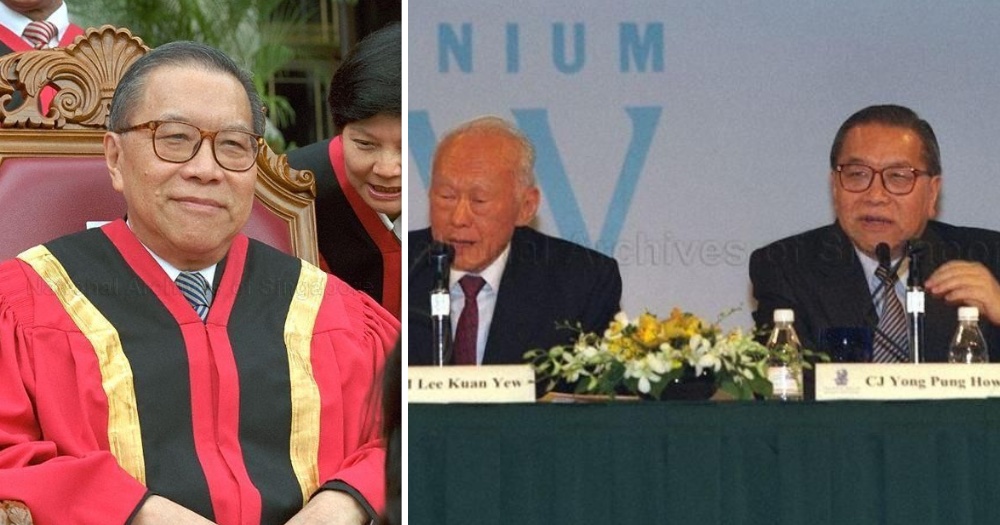Yong Pung How - Singapore's 2nd Chief Justice, former OCBC chairman and SMU chancellor- has passed away at the age of 93 on January 9, 2020, the Ministry of Communications and Information (MCI) has confirmed.
He served as Chief Justice from September 28, 1990 to April 10, 2006.
Yong initially practiced criminal law in Kuala Lumpur as partner in Shook Lin and Bok, and remained there till 1970. He left the legal fraternity to join OCBC as director in 1971.
Despite the career switch, none other than Lee Kuan Yew, who was Yong's schoolmate in Cambridge University, himself offered Yong a position as Supreme Court Judge in 1976. Yong rejected him.
Instead he worked wonders for OCBC, first as a director, then as their chairman and CEO, with OCBC expanding their network to 88 branches and offices during his tenure at OCBC.
In 1989, Lee came calling again, this time he would offer him the position of Chief Justice.
Yong would recall in a 2016 Straits Times article, via AsiaOne, how Lee had convinced him to take the job.
"He practically scolded me, bringing up the fact that I had declined his offer to be a Supreme Court judge in 1972.
He said there was no time to waste. I asked him what I was supposed to do. He said: 'Become Chief Justice! Just clean up the whole thing, you know what to do.'"
Yong took a hefty paycut (from S$2 million a year to less than S$300,000) out of a "duty for the country".
Yong was best known for drastically cutting down the time taken for suits to be heard. In his position as Chief Justice, Yong introduced radical changes that streamlined procedures and utilised technology, such as the Electronic Filing System, to speed up processes and solve issues of storage space.
Yong also abolished the traditional wigs and terms of address, such as “My Lord” or “Your Lordship”, for Supreme Court judges during his first speech.
Matters involving minor legal arguments were transferred to registrars and the Subordinate Courts. Longstanding procedures were simplified to speed up the trial process, and pre-trial conferences were introduced to help courts monitor the progress of cases. Judicial commissioners were also appointed to clear the backlog.
In July 1990, when Yong was appointed as Chief Justice, there was a backlog of 2,000 suits waiting to be even heard in the High Court, which according to the procedures of that time, would take another five to six years.
Thanks in no small part to Yong, by the mid-90s, the backlog had been cleared.
In recognition of his achievements, Yong was conferred the Distinguished Service Order in 1989 and the Order of Temasek (First Class) in 1999.
Yong eventually stepped down as Chief Justice in April 10, 2006, a day before his 80th birthday, and was succeeded by Chan Sek Keong.
Yong has a daughter, Ying-I, who is presently the permanent secretary of the MCI.
Image from NAS
If you like what you read, follow us on Facebook, Instagram, Twitter and Telegram to get the latest updates.
